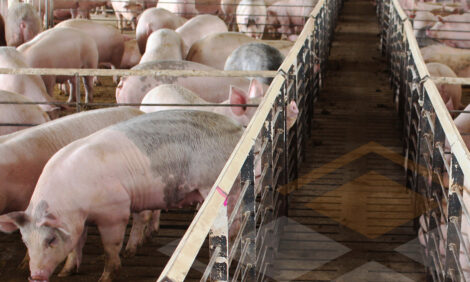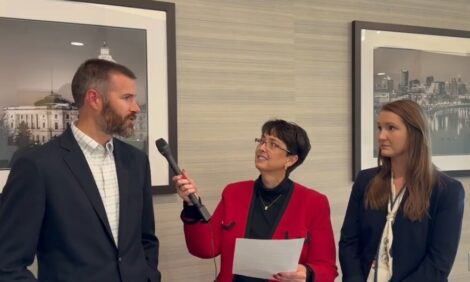



Leman: Senecavirus monitoring in sows
Monitor senecavirus as part of a PRRS elimination protocolEditor's note: The following is from a presentation by Alejandrina da Silva de Pita and colleagues at the Grupo Porcícola Mexicano, Mexico, and the University of Minnesota during the 2024 Leman Swine Conference.
Senecavirus A (SVA) is a picornavirus causing vesicular lesions in swine and is difficult to distinguish from foreign animal diseases such as foot-and-mouth disease. It is known that an SVA outbreak is self-limiting, and the virus can persist in tonsils for more than 9 weeks in a sow herd after the outbreak.
A farrow-to-wean farm with 1,800 sows located in Yucatán, Mexico, was confirmed to have had prior exposure to SVA through an immunofluorescent antibody test (IFA SVA) without showing any clinical signs. The farm stopped the introduction of gilts for 51 weeks during a porcine reproductive and respiratory syndrome (PRRS) elimination program. This study monitored the persistence of SVA in the tonsils of sows during the PRRS elimination protocol in sows under herd closure.
Starting at 20 weeks after the start of herd closure in 2023, tonsil tissues from a total of 162 sows were tested for SVA by RT-PCR over a period of 37 weeks (monitoring period). Beginning at week 41 of herd closure 6 sentinels (negative for PRRS and SVA) were introduced for 10 weeks. At the end of the 10 weeks, serum samples, rectal swabs, and tonsils were collected from each sentinel for IFA and SVA detection by RT-PCR. Once the farm was considered PRRS negative at week 51 of herd closure, 340 SVA-negative gilts were introduced, and the SVA monitoring protocol continued for an additional 6 weeks. Finally, serum samples were tested for IFA SVA at 21 and 53 weeks of herd closure to confirm if the sows had been naturally exposed to SVA.
Seven per cent of the tonsils collected from the sows at 20 weeks of herd closure tested positive for SVA by PCR, with an average Ct value of 32.83 (range: 30.08 - 35.4). Eighty per cent of SVA-positive tonsils were detected during the first 16 weeks of the monitoring period. The last detection of a positive or suspect result was in weeks 43 and 47 of herd closure, respectively. IFA SVA results confirmed that at least 46% and 73% of sows were naturally exposed to SVA at 20 and 54 weeks of the herd closure, respectively.
All the sentinels tested negative for SVA in all assays performed (RT-PCR and IFA) after completing the 10-week period. After introducing 340 negative gilts, all tonsils collected from the herd remained negative for eight additional weeks. No clinical SVA outbreak has been reported in the herd to date.
Herd closure without mass inoculation was effective for SVA elimination in a naturally infected population, and 47 weeks were needed to stop the detection of SVA in tonsils. Therefore, targeting SVA elimination could be supplementary to PRRS elimination protocols.







